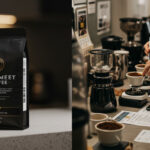
From Ethiopia to the World
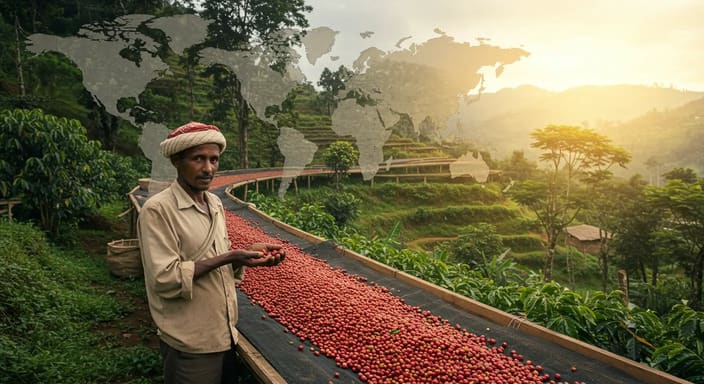
Table of Contents
ToggleThe story of coffee begins in the lush highlands of Ethiopia, where legend has it that a goat herder named Kaldi discovered the energizing effects of coffee beans after noticing his goats became unusually lively after eating the red berries. From these humble beginnings, coffee spread across the Arabian Peninsula, where it was first roasted and brewed in the 15th century. By the 17th century, coffee had traveled to Europe, becoming a beloved beverage that fueled intellectual conversations and inspired the creation of coffeehouses. Coffee’s journey from Ethiopia to the world is a testament to its universal appeal and transformative impact on cultures.
Evolution of Coffee Culture in the U.S.
In the United States, coffee culture has evolved dramatically over the centuries. Introduced in the colonial era, coffee gained popularity during the Revolutionary War as a patriotic alternative to British tea. The 19th century saw the rise of coffee as a staple in American households, with innovations like the percolator and instant coffee making it more accessible. The 20th century brought the advent of diners and coffee breaks, solidifying coffee’s role in daily life. However, it wasn’t until the late 20th century that the U.S. truly embraced the artistry of coffee, thanks to the influence of European espresso traditions and the rise of chains like Starbucks.
- 1773: The Boston Tea Party made coffee a symbol of independence.
- 1901: The invention of instant coffee by Satori Kato revolutionized convenience.
- 1971: Starbucks opened its first store, sparking a coffeehouse revolution.
The Rise of Specialty Coffee
In the 21st century, the specialty coffee movement has redefined how Americans experience coffee. Focused on quality, sustainability, and craftsmanship, this movement emphasizes every step of the coffee process—from bean to cup. Third-wave coffee shops prioritize direct trade with farmers, single-origin beans, and precise brewing methods like pour-over and AeroPress. The rise of home baristas has also played a significant role, with enthusiasts investing in premium equipment to recreate café-quality coffee at home. Specialty coffee has transformed coffee from a simple beverage into a gourmet experience, celebrated for its complexity and cultural significance.
“Specialty coffee is not just about drinking coffee; it’s about understanding and appreciating the story behind every cup.” – Anonymous Coffee Enthusiast
Types of Coffee Beans
Arabica vs. Robusta: What’s the Difference?
When diving into the world of coffee, you’ll quickly encounter two primary types of beans: Arabica and Robusta. Arabica beans are known for their smooth, complex flavors, often featuring notes of fruit, berries, and chocolate. They make up about 60-70% of the world’s coffee production and are typically grown at higher altitudes. On the other hand, Robusta beans are stronger, more bitter, and have a higher caffeine content. They’re often used in espresso blends for their bold, earthy profile and rich crema. While Arabica is favored for its nuanced taste, Robusta shines in giving coffee a robust kick.
Single-Origin vs. Blends: Which to Choose?
Choosing between single-origin and blended coffee can feel like a delightful puzzle. Single-origin coffee comes from one specific region or farm, offering a unique flavor profile that reflects its terroir. It’s perfect for those who enjoy exploring the distinct characteristics of different coffee-growing regions. Blends, however, combine beans from multiple origins to create a balanced and consistent flavor. They’re often crafted to highlight complementary notes, making them ideal for espresso or those who prefer a reliable, harmonious cup. The choice ultimately depends on your palate and how adventurous you feel!
How to Identify High-Quality Beans
Spotting high-quality coffee beans doesn’t require a degree—just a little know-how! Here are a few tips to guide you:
- Check the roast date: Freshness is key. Look for beans roasted within the past two weeks.
- Examine the beans: High-quality beans are uniform in size and color, with no visible defects like cracks or discoloration.
- Consider the origin: Beans from reputable regions or farms often indicate better quality.
- Trust your senses: A rich, inviting aroma is a good sign, while stale or musty scents can indicate poor quality.
Remember, investing in high-quality beans is the first step toward crafting a truly exceptional cup of coffee.
Brewing Methods Explained
Pour-over: Precision and Flavor
The pour-over method is beloved for its ability to highlight the nuanced flavors of specialty coffee. By manually pouring hot water over freshly ground coffee in a filter, this technique allows for precise control over brewing time and water flow. The result? A clean, bright cup that brings out the subtle notes of your beans. Popular tools include the Hario V60 and Chemex, which are staples in any home barista’s collection.
French Press: Rich and Bold
If you crave a full-bodied and robust cup of coffee, the French press is your go-to method. This immersion technique steeps coarse coffee grounds in hot water before pressing them down with a metal filter. The result is a rich and bold brew with a slightly heavier mouthfeel, as the oils from the beans remain in the final cup. Ideal for those who enjoy a more intense coffee experience.
Espresso: The Base of Many Favorites
Espresso is the foundation of countless coffee classics, from lattes to cappuccinos. This method forces hot water through finely-ground coffee under high pressure, producing a concentrated and flavorful shot. While espresso machines can be an investment, they’re a must for anyone serious about recreating café-quality drinks at home. Mastery of espresso brewing requires attention to grind size, tamping pressure, and extraction time.
Cold Brew: Smooth and Refreshing
For a smooth and refreshing alternative, cold brew is a standout. This method involves steeping coarsely ground coffee in cold water for 12-24 hours, resulting in a low-acid, mellow brew. Unlike iced coffee, which is simply hot coffee cooled down, cold brew is naturally sweet and less bitter, making it perfect for warm weather or as a base for creative coffee drinks. It’s simple to prepare and requires minimal equipment, making it accessible for all coffee lovers.
Essential Coffee Equipment
Must-Have Tools for Home Baristas
To create café-quality coffee at home, having the right tools is essential. While the basics may vary depending on your brewing method, there are a few staples every home barista should consider:
- Scale: Precision is key in coffee brewing. A digital scale ensures accurate measurements of both coffee grounds and water, leading to a consistent and balanced cup.
- Timer: Timing your brew is crucial for extracting the perfect flavor. Many scales come with built-in timers, but a simple kitchen timer or even your smartphone will work.
- Storage Containers: Keep your coffee beans fresh with airtight containers, preferably made of ceramic or opaque materials to protect them from light and air.
Investing in a Quality Grinder and Kettle
Two of the most impactful investments for any home barista are a burr grinder and a gooseneck kettle.
- Burr Grinder: Unlike blade grinders, burr grinders provide a consistent grind size, which is vital for even extraction. Whether you prefer a manual or electric model, this tool will elevate your coffee game. Pro tip: Grind your beans just before brewing for the freshest flavor.
- Gooseneck Kettle: Precision pouring is essential for methods like pour-over. A gooseneck kettle allows you to control the flow of water, ensuring every coffee ground is evenly saturated. Look for one with temperature control for added versatility.
Choosing the Right Brewing Device for Your Style
Your brewing method should align with your taste preferences and lifestyle. Here’s a quick guide to help you choose:
- Pour-Over: Ideal for those who enjoy a clean, bright cup of coffee. Devices like the Hario V60 or Chemex are excellent choices.
- French Press: Perfect for those who prefer a full-bodied, rich brew. It’s also one of the simplest methods to master.
- Espresso Machine: For those who love lattes, cappuccinos, or straight espresso, an espresso machine is a worthwhile investment. Keep in mind, this method requires a steeper learning curve and additional accessories like a tamper and frothing pitcher.
- AeroPress: A versatile and portable option, great for experimenting with different brewing techniques.
Tips for the Perfect Cup
The Importance of Water Temperature
Water temperature plays a pivotal role in unlocking the full potential of your coffee. Brewing with water that’s too hot—above 205°F (96°C)—can result in a bitter, over-extracted cup, while water that’s too cool—below 195°F (90°C)—leads to under-extraction, producing a flat and underwhelming flavor. For optimal results, aim for a sweet spot between 195°F and 205°F. This range ensures balanced extraction, allowing the coffee’s nuanced flavors to shine.
Pro tip: If you don’t have a thermometer, let boiling water sit for about 30 seconds before pouring it over your coffee grounds.
Grind Size and Its Impact on Flavor
Grind size is another crucial factor that directly influences the taste of your coffee. Think of it as the “key” to unlocking the right extraction time and flavor profile. Here’s a quick guide:
- Coarse grind: Ideal for French press or cold brew, as it requires longer steeping times.
- Medium grind: Perfect for drip coffee makers, offering a balanced extraction.
- Fine grind: Best suited for espresso machines, where a short brew time is essential.
Using the wrong grind size can lead to over-extraction (bitter) or under-extraction (sour), so always match your grind to your brewing method.
How to Store Coffee Beans for Freshness
Freshness is the heart and soul of a great cup of coffee, and proper storage is the key to preserving it. Coffee beans are sensitive to light, air, moisture, and heat, so follow these tips to keep them at their peak:
- Use an airtight container: Store your beans in a container with a tight seal to prevent exposure to air and moisture.
- Keep it cool and dark: Avoid storing beans near heat sources or in direct sunlight. A pantry or cabinet works perfectly.
- Buy in small quantities: Purchase only what you’ll use within 1-2 weeks to ensure your beans stay fresh.
Remember, coffee beans are at their best within two weeks of roasting, so try to buy from local roasters or those who provide roast dates.
Exploring Coffee Flavors
Understanding Coffee Tasting Notes
When it comes to exploring coffee flavors, the first step is understanding tasting notes. These are the subtle flavors and aromas that you can detect in your cup of coffee. Think of them as the coffee’s personality. Tasting notes can range from fruity and floral to nutty and chocolaty, depending on the bean’s origin, roast level, and brewing method. To fully appreciate these nuances, try slurping your coffee to aerate it, allowing the flavors to spread across your palate. A well-brewed cup of coffee can reveal layers of complexity, making each sip a new discovery.
Pairing Coffee with Food
Just like wine, coffee can be paired with food to enhance both the beverage and the meal. Here are some classic pairings to try:
- Dark Roast Coffee: Perfect with chocolate desserts or rich, savory dishes like steak.
- Light Roast Coffee: Complements fruity pastries, citrus-based desserts, or mild cheeses.
- Medium Roast Coffee: Versatile enough to pair with breakfast items like pancakes or lunch dishes like sandwiches.
Experimenting with pairings can elevate your coffee experience, turning a simple cup into a gourmet adventure.
Experimenting with Milk and Alternative Flavors
Milk and alternative milk options can transform your coffee, adding creaminess and new dimensions of flavor. Here’s how to experiment:
- Whole Milk: Adds richness and sweetness, ideal for lattes and cappuccinos.
- Almond Milk: Brings a nutty flavor and works well with light roasts.
- Oat Milk: Creamy and slightly sweet, it’s a great match for medium and dark roasts.
- Flavored Syrups: Vanilla, caramel, or hazelnut syrups can add a playful twist to your daily brew.
Don’t be afraid to mix and match to find your perfect combination. The possibilities are endless, and the journey is half the fun!
Advanced Techniques for Coffee Enthusiasts
Learning Latte Art Basics
Latte art is not just a visual treat; it’s a testament to skill and precision. To start, ensure your espresso shot is perfectly extracted and your milk is frothed to a silky microfoam consistency. The key is to pour steadily and control the flow. Begin with the classic heart design, progressing to more intricate patterns like rosettas or tulips. Remember, practice makes perfect, and patience is your best ally in mastering this craft.
Mastering Manual Espresso Machines
Manual espresso machines, such as lever or piston models, offer unparalleled control over your brew. Start by preheating the machine and grinding your beans to a fine consistency. The pressure and timing are critical—aim for a 25-30 second extraction. Experiment with different grind sizes and tamping pressures to find your perfect balance. Manual machines require a bit of finesse, but the reward is a rich, nuanced espresso tailored to your taste.
Exploring Coffee Roasting at Home
Roasting your own coffee beans at home opens up a world of flavor possibilities. Start with a small batch of green beans and a simple roasting method, such as a stovetop pan or a dedicated home roaster. Pay close attention to the roast stages, from the first crack to the second, as this determines the flavor profile. Lighter roasts highlight the bean’s origin and acidity, while darker roasts bring out richer, bolder notes. Keep a roasting journal to track your progress and refine your technique.
FAQ: Advanced Coffee Techniques
Q: How long does it take to learn latte art?
A: Mastering latte art can take weeks or even months, depending on your practice frequency and dedication.
Q: Are manual espresso machines worth the investment?
A: Absolutely! They offer greater control and a more hands-on brewing experience, perfect for coffee enthusiasts seeking to elevate their craft.
Q: What’s the best way to start home roasting?
A: Begin with a small, affordable setup and experiment with different beans and roast levels. Join online communities to learn from experienced home roasters.
Embracing these advanced techniques will deepen your appreciation for coffee and allow you to create exceptional beverages from the comfort of your home. Happy brewing!
is an editor at Coffee With Finance and a true coffee enthusiast. He explores roasts, flavors, origins, and brewing methods, sharing stories that captivate both beginners and experts. Petter believes great coffee sparks meaningful moments—and that includes simple, jargon-free talks about personal finance. His content blends aroma, flavor, and insight, making each coffee break an inspiring and enriching experience.

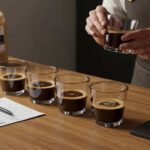
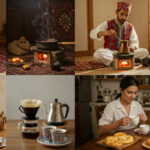










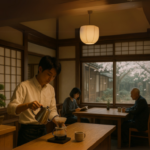




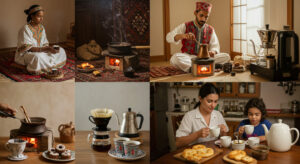








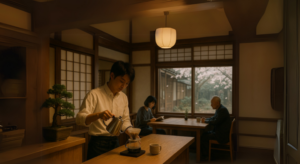
Post Comment